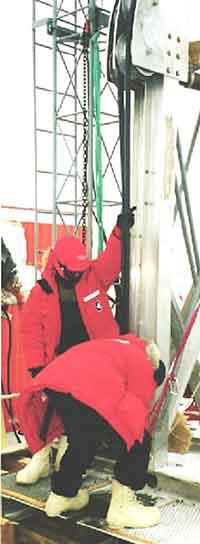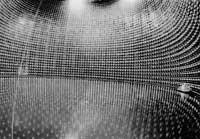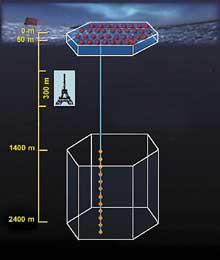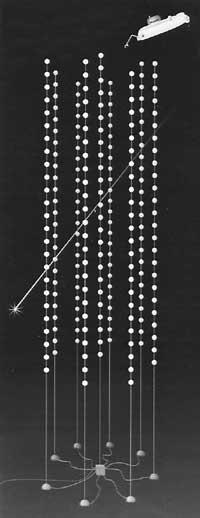Looking for neutrinos
2001/03/23 Imaz Amiano, Eneko - Elhuyar Zientziaren Komunikazioa

The neutrinos are elementary particles and they barely interact with the mass, they barely have mass. This has made them very attractive in the field of astronomy to locate distant galaxies and stars or to investigate the border of the universe. In fact, neutrinos originate spontaneously in space and, unlike most of the particles, the quickest neutrinos, those of higher energy, are extremely small, they lack load and their mass is very small. Consequently, they rarely collide with other particles and, in the absence of loads, they do not tend to interact with them. For this reason, the majority of neutrinos of great energy cross the Earth and follow its path.
For this reason, high-energy neutrinos tend to make a very direct route and indicate the location of their energy regions of origin. And that's what interests astronomers because they are created around black holes and on the border of the universe. But they are also very difficult to detect.
To detect these high-energy neutrinos, the researchers suspected that the Antarctic ice was a good natural detector and in 1997 they made a 2 km long hole to launch the AMANDA project. In fact, the few neutrinos that collide with other Earth particles release particles and energy called muons, forming a very short blue light, called Cerenkov radiation. If this radiation is received, the original neutron route can be known. In the AMANDA project 302 photobidifier tubes (PMT) have been used immersed in ice. In 138 days 263 neutrinos of great energy have been detected and a celestial map with the origin of each particle has been elaborated.
They are very happy with these results, but say that to work more accurately it would be necessary to put 5.000 PMT in a cubic kilometer of Antarctica.

Gai honi buruzko eduki gehiago
Elhuyarrek garatutako teknologia





